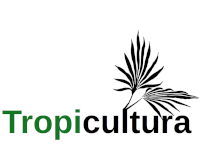- Accueil
- Volume 36 (2018)
- Numéro 2
- Migrations agricoles et développement durable, couple toujours inconciliable ? : l’exemple de Koza II dans la région du Nord-Cameroun
Visualisation(s): 485 (0 ULiège)
Téléchargement(s): 437 (0 ULiège)
Migrations agricoles et développement durable, couple toujours inconciliable ? : l’exemple de Koza II dans la région du Nord-Cameroun

Document(s) associé(s)
Version PDF originaleRésumé
Les migrations dans la Région du Nord sont relativement anciennes. Elles remontent en effet au début des années 1970 et ont été initiées et encadrées par l’État, les Organisations de la Société Civile (OSC) et par les initiatives spontanées. Très souvent, elles ont été analysées comme sources de conflits et de destruction de l’environnement. Les migrations des populations de l’Extrême-Nord vers le sud de Garoua répondaient à un besoin de désengorger les zones montagnardes, alors surpeuplées et victimes d’une extrême pauvreté, par le développement de l’agriculture, notamment du coton. La déforestation et les divergences de points de vue ne manquent donc pas dans ce contexte; mais elles peuvent conduire à une conscience de préservation de l’environnement et à l’ingénierie sociale institutionnelle de cohabitation où les intérêts de différents membres sont équilibrés. Cette approche a occulté et compromis une résilience qui a permis une certaine durabilité socio-économique, environnementale et écologique comme cela peut s’observer dans la localité de Koza II. Mais espérer obtenir du développement durable en contexte de migration comme à Koza II suppose de relever le défi de garantir les intérêts locaux et les articuler avec les nationaux, voire les internationaux.
Abstract
Are Agricultural Migrations and Sustainable Development Incompatible? The example of Koza II in the North- Cameroon Region.
Migrations in the Northern Region are a relatively old phenomenon. They date back to the early 1970s and were initiated and supervised by the State, Civil Society Organizations (CSOs) and spontaneous initiatives. Very often they have been analyzed as a source of conflict and destruction of the environment. The migrations of the populations of the Far North towards the south of Garoua responded to a need to relieve the mountain areas, which were then overpopulated and suffering extreme poverty, by the development of agriculture, notably cotton. Deforestation and conflicting views are not lacking in this context, but they can lead to a greater awareness of conservation of the environment and institutional social engineering of cohabitation where the interests of different members are balanced. This approach has obscured and compromised a resilience that has allowed for a certain socio-economic, environmental and ecological sustainability, as can be seen in Koza II. However, the hope to achieve sustainable development in the context of migration, as in Koza II, means taking up the challenge of guaranteeing local interests and articulating them with the national and even international ones.







